The Venus flytrap (Dionaea muscipula) is most likely the best known carnivorous plant in the entire world, and it is very common to have as a houseplant. In the wild, you will find this plant in subtropical wetlands in the U.S. states North Carolina and South Carolina. They are actually not that hard to find there if you know where to look, but you will not find them in the wild anywhere else in the world, so they have a very narrow geographical range.
The IUCN Red List has them classified as Vulnerable, but they do not give a good reason why it is classified as this. However, the habitat the live in is having the same problems as many other places, and they are also very sensitive to invasive plant species that are better suited at reproducing than the Venus flytrap is. Some people are also poaching the plant in order to sell it, and four men recently got arrested for poaching nearly 1,000 plants – or almost 3 % of the entire wild population!
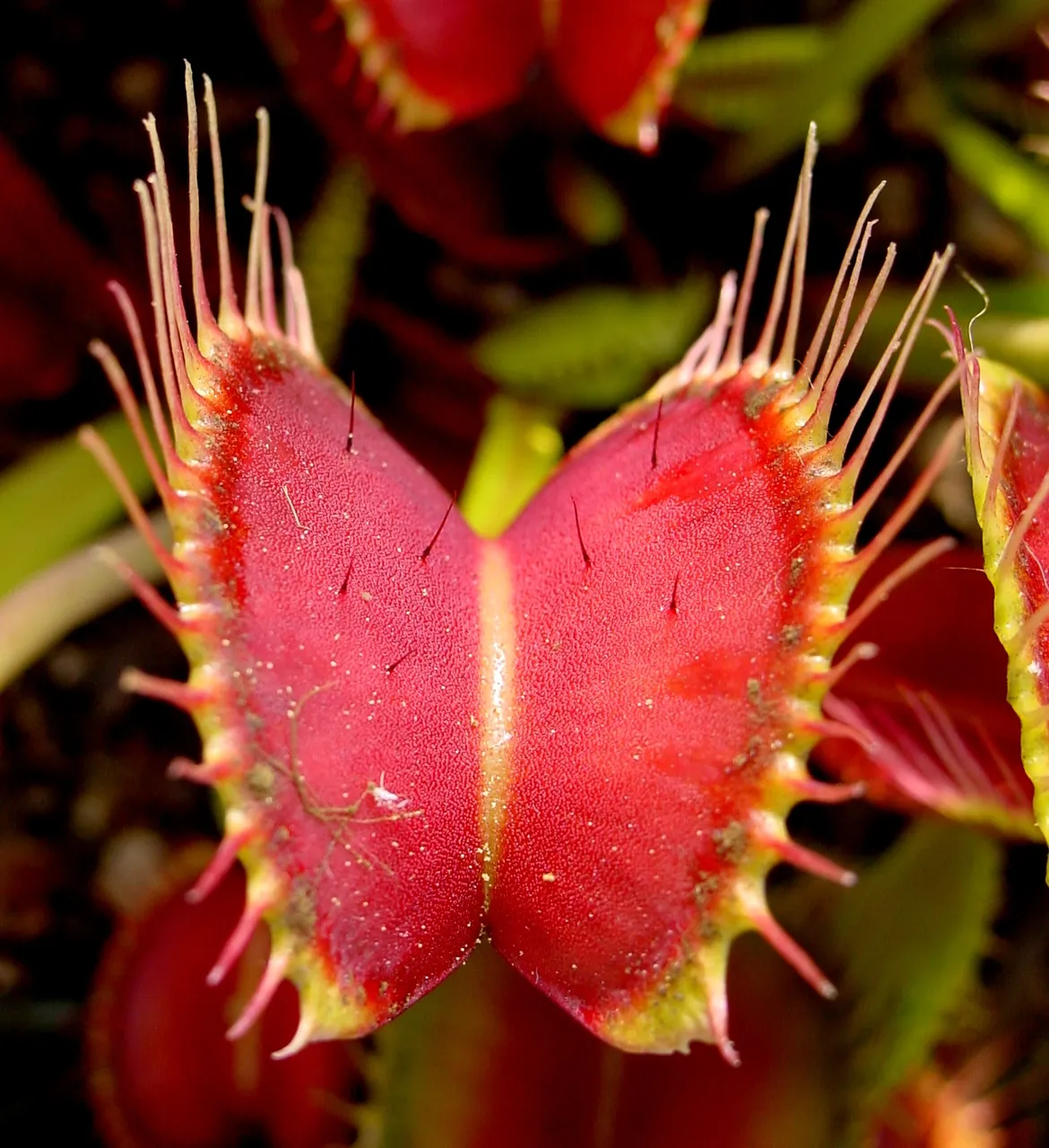
The photo shows the “jaw” of the plant, along with the trigger pins that is uses to catch its prey. Image by Noah Elhardt, posted with the Creative Commons Attribution-Share Alike 2.5 Generic license.
The diet of the Venus flytrap is mainly insects and arachnids, which is captures when they land on the plant. As you can see on the image above, there are several pins inside the “jaw” of the plant, and if two of these are touched within a short time (approximately twenty seconds), the plant closes its “jaws” and trap the prey inside.
If an insect were to be caught, their best survival strategy would be to lie completely still. This is because the Venus flytrap does not start the digestion process unless it is certain that it has caught prey, so 4 or 5 other trigger hairs must be touched before it will begin to digest the prey. However, the insects obviously do not know this, so this will try to escape, and most likely touch more trigger pins in the attempt.
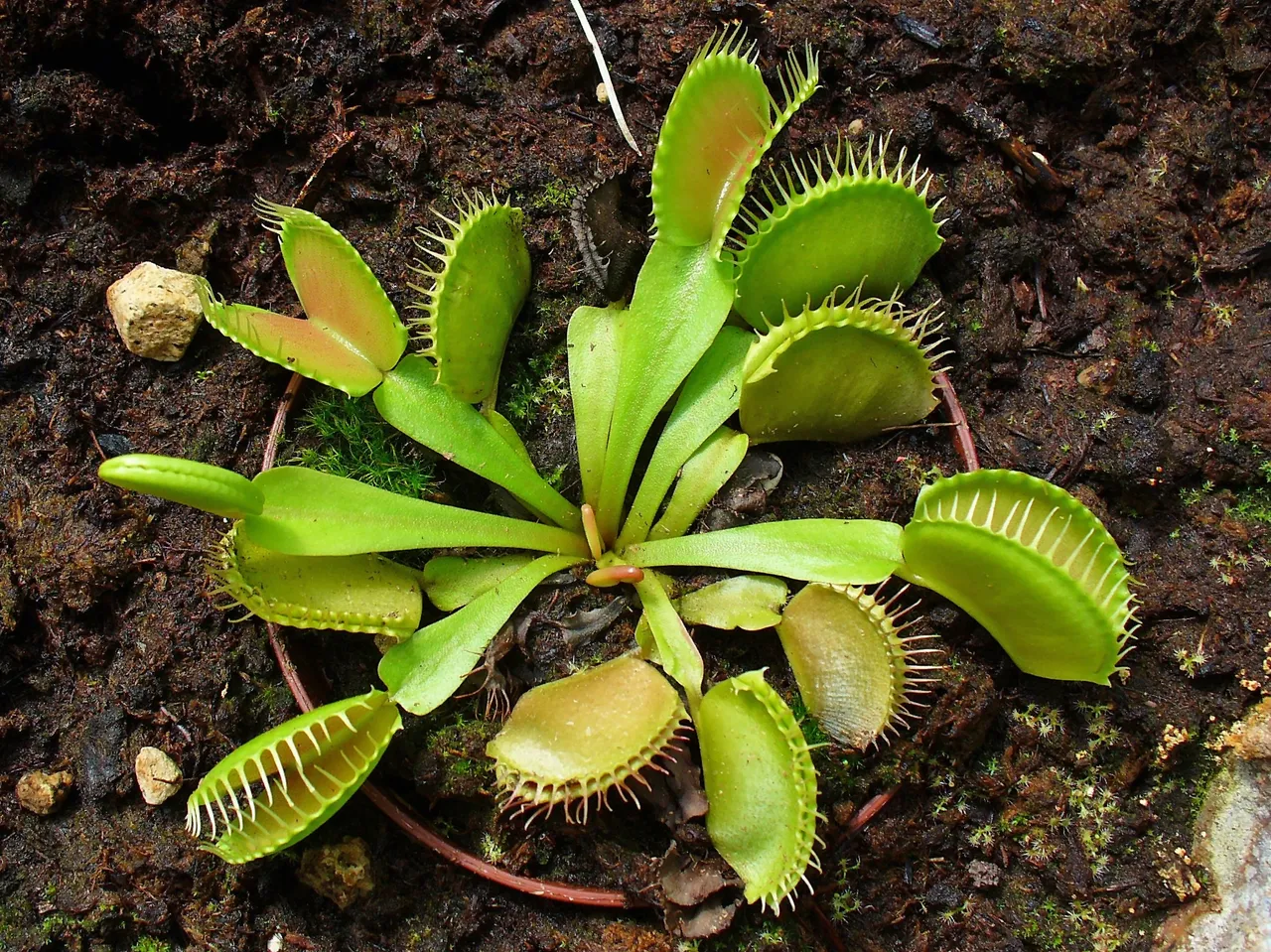
Image by H. Zell, posted with the Creative Commons Attribution-Share Alike 3.0 Unported license.
Anyway, when an insect is caught in the “jaw” and the digestion process begins, the jaw will stay closed for about ten days. During this time the plant will release a fluid that contains a lot of digestive enzymes. This will break down the organic matter of the prey, and lets it be absorbed by the plant.
And a quick flashback to a year old post for those of you who like to read about plants who eat animals: The pineapple plant is also carnivorous!.
See how the Venus flytrap feeds
I just want to share a little YouTube video with you, where a person is feeding 18 traps in a single plant. It looks pretty cool, and gives you an idea of how it looks like when it catches insects.
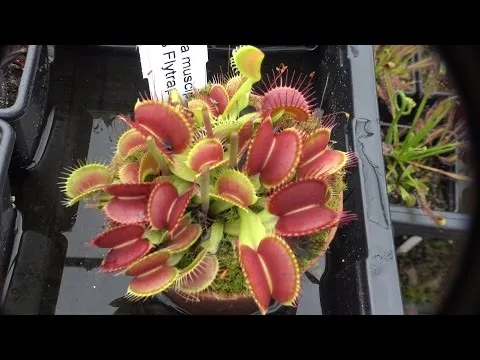
Right, now let’s return to the main topic of this post; how the Venus flytrap get pollinated!
How the Venus flytrap get pollinated
All flowering plants need a method to spread and get pollen, and as we all know, bees and other flying insects are the biggest contributors to this activity. However, when the plant is also eating insects, how would it be able to be pollinated? This has actually been a question that scientists have been asking for a long time, and a new research paper believes that it has found the answer.
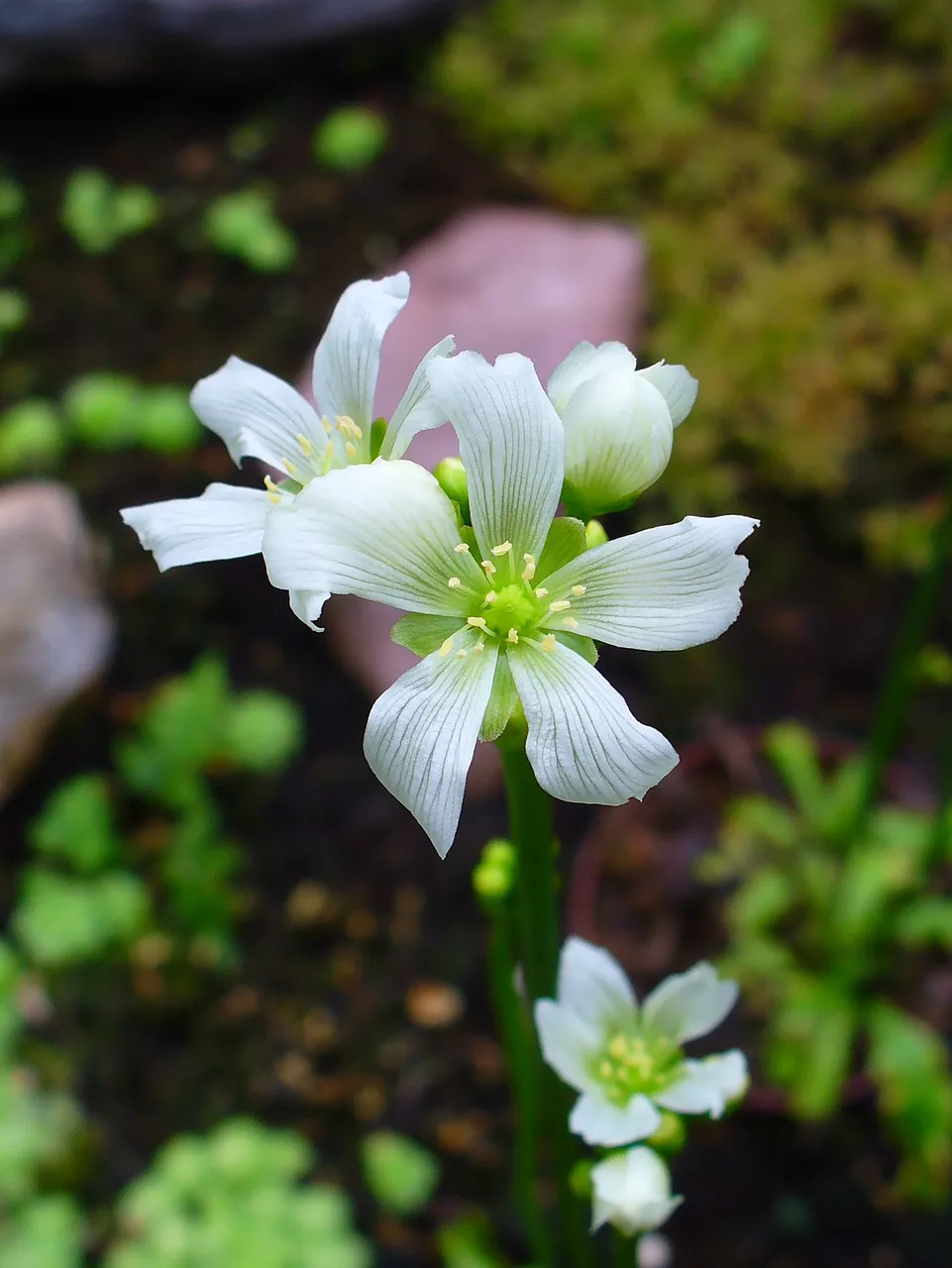
The Venus flytrap’s flower. Image by H. Zell, posted with the Creative Commons Attribution-Share Alike 3.0 Unported license.
The research team lead by Elsa Youngsteadt, an entomologist at North Carolina State University gently opened the “jaw” of 400 different Venus flytrap plants, and found over 200 prey animals from over 100 different species inside the plant. This shows that the plant is obviously not a picky eater.
After having collected all the prey insects, the team returned to the lab the see the stomach contents of them. The basically opened them all up, and then began to count the grains of pollen in order to find out which of these were the most active pollinators for the Venus flytrap. The research team found that the insect species who carried the pollen of the Venus flytrap was rather uncommon to find compared to insects who carried the pollen of other flowers, giving strong indication that the plant has some feature that allows it to avoid eating their primary pollinators into a meal!
While we have a good indication of them choosing not to eating the main pollinators, there is still no one who knows exactly how it achieves this. The Venus flytrap is a very unique species that is actually pretty different from most other plants, even from the other carnivorous plants, so we still have a lot of stuff to learn from it. Some theories involves the pollinators being immune to the scent of the plant, while others think the plant itself is capable of deterring the pollinators from being eaten.
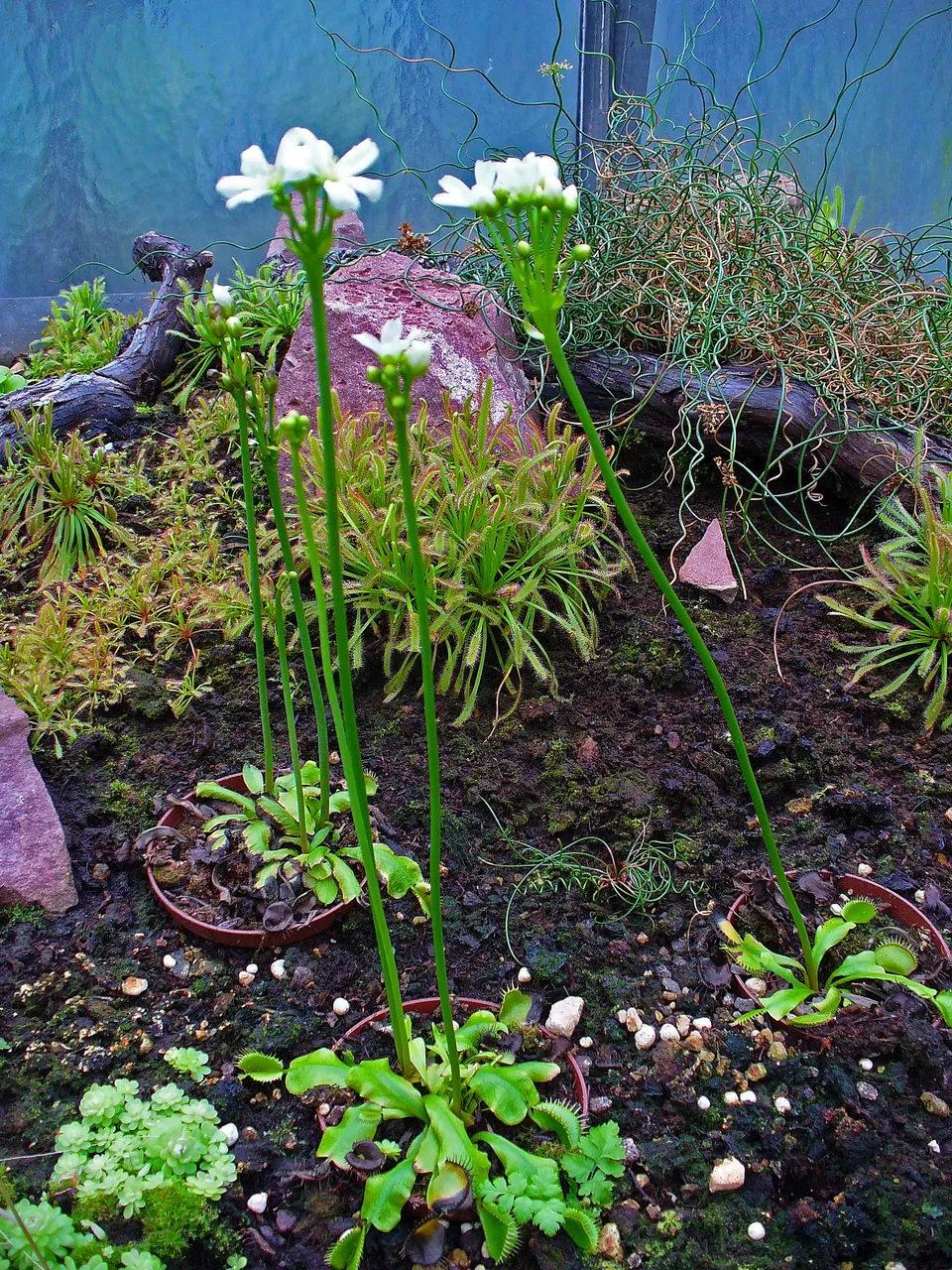
Some Venus flytraps with the flowers growing up from the base of the plant. There is also a spatial division involved in keeping the pollinators from being eaten. Image by H. Zell, posted with the Creative Commons Attribution-Share Alike 3.0 Unported license.
Thanks for reading
If you’re interested in learning more, then check out the research paper. It costs $10 if you are not able to login with a University login, so it might not be worth it to most of you, but the abstract is of course available for free.
Anyway, thanks for checking out my post about the pollination of the Venus flytrap!
About @valth
Hey, I'm @valth - the author of this post. I love to write about nature, biology, animals, nature conservation, ecology and other related branches of science, and I occasionally write about my life, about Steem or about random stuff as well. I'm trying my best to write at least one post every day, so make sure to give me a follow if you enjoy my content and want to see more of it.
Join the @valth community!
I love nothing more than to engage with my readers, so please join the @valth community in the comment section. You will definitely find more information about the topic, personal experiences, questions, and even opposing views down there, so don't miss out on learning more.
I always reward users who post good comments, so please take the opportunity to share your views and get a small upvote in exchange for it.